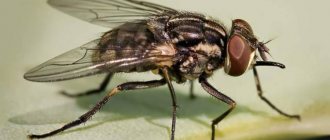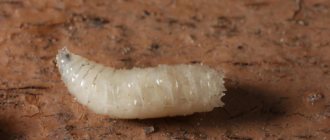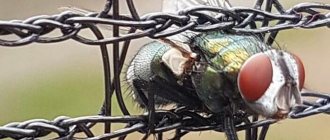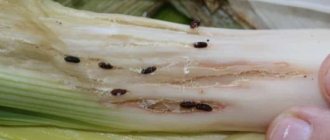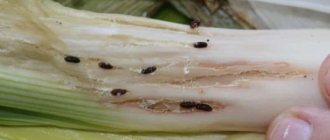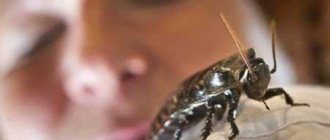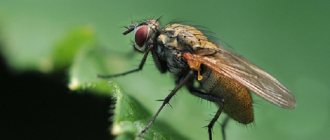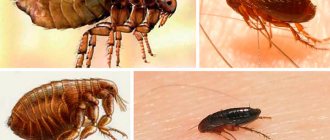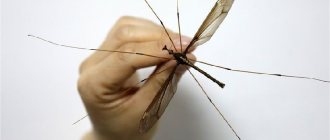Getting rid of flies at home is not always easy, but it is vital. We will look at the most popular methods, and also figure out where flies in the house come from, and how to make your home unattractive to these insects.
When flies fly around a room, it can sometimes drive you crazy. Slippers and fly swatters are used, but the next day there are even more insects. Is this a familiar picture? If you are constantly thinking about how to get rid of flies in the house, approach this task comprehensively.
The housefly, or housefly, cannot imagine its life without a person. Thanks to his activity, she actively feeds and reproduces. The body length of the insect is 6-8 mm, the abdomen is yellowish. The fly is attracted to garbage, feces and other waste materials needed for its maggots.
Due to the fact that flies spend most of their lives in an environment saturated with dangerous bacteria, they are carriers of various diseases. On the legs and wings of insects there may be eggs of worms, pathogens of intestinal infections (salmonellosis, cholera, dysentery, typhoid), tuberculosis, etc.
Particularly dangerous is the blowfly , which is also not averse to flying into the house. It is larger than the domestic one, up to 25 mm in length. Differs in grey, blue or green color of the abdomen. Its larvae can parasitize the skin of domestic and farm animals and even humans, causing a disease such as myiasis (ulceration). Products containing fly eggs or maggots are also dangerous. If you have a weak immune system or stomach disease, they may not be completely digested and cause serious problems.
Therefore, if “a fly lands on the jam”, be careful, perhaps the food is already contaminated and is not suitable for consumption. Fruits and vegetables should be washed in hot water after flies have crawled on them.
Where do flies come from in an apartment?
hozuyut.ru
It’s easy for a fly to get into an apartment. Open windows and doors, half-closed vents and transoms, a ventilation shaft - insects will not fail to take advantage of them to fly into the room. But there is another, less pleasant way: when flies appear in the house from eggs and larvae laid on vegetables, fruits or flowers. Adults begin to actively feed and look for a place to lay eggs. And even if they wanted to, they won’t be able to fly out of the apartment, because... they don't see the glass.
Sometimes a fly appears in an apartment in winter. This means that the adult was hibernating, and then suddenly came to life, feeling warmth. Larvae and pupae also hibernate.
Now let’s look at how to quickly get rid of flies in the house so that they do not have time to multiply.
When a person is not the owner of the house, but a tasty morsel
Flies are extremely annoying, but not because the purpose of their life is to drive a person to white heat. We can safely call them acrobat insects: they perform many tricks in the air, are able to spin in place and move backwards. This activity requires a lot of energy. It is not surprising that flies spend most of their lives searching for food.
Flies constantly land on humans because they feed on microelements from his sweat and sebum.
For them, human skin is like a self-assembled tablecloth; fat and exfoliated particles of the epidermis can be found on it. And human sweat is simply a storehouse of useful microelements for these insects! It contains various salts (calcium, phosphorus, potassium), sulfuric acid compounds, and products of protein metabolism. In a word, for them we are a walking pharmacy and a canteen rolled into one, and even free of charge.
In ancient times, the wingspan of flies reached one meter. Can you imagine such a giant chasing you from room to room? We can only be glad that we live here and now. Or is it too early to rejoice?
How to kill flies using chemicals
Chemicals will help deal with the abundance of flies. Among the popular ones: Dichlorvos, Chlorophos, Tsifoks, Mukhoyar, Mashenka, Muskachid, Fly Byte, Karakurt. Baits are produced in the form of emulsions, powders, granules, sticky tapes, etc. After treatment, the flies will die, and the eggs and larvae will not move on to the next stage of development. Just be careful when using any chemical fly repellent at home. Read the instructions for the medications carefully and do not exceed the dosage.
Which flies pose the greatest danger?
There are a huge number of insect species in the world. However, only some of them are carriers of pathological microorganisms that cause diseases. We are talking about synanthropic flies, ecologically associated with human activity and existence. These include the following groups of creatures:
- Real flies. Includes indoor pests, market household pests, and burners.
- Carrion flies. On the territory of Russia they are represented by green, blue, gray and red-headed species.
- Gadflies. Abdominal, subcutaneous, gastric.
- Other Diptera. Bloodsuckers, fruit flies, cheese flies and cereal flies, blackbirds and other representatives of the suborder Brachycera.
Folk remedies for flies in the house
bezklopa.ru
If sticky tapes with garlands of flies look unsightly, and dangerous poisons cannot be used due to the presence of children and pets in the house, use folk remedies. They will cope no less effectively with even the most annoying individuals.
First of all, a repellent smell will help. As soon as there are too many flies in the room, dissolve 2-3 tbsp. vinegar in 1 liter of water and wipe all tables, window sills and other surfaces attractive to flies. Spraying essential oils of mint, lavender or eucalyptus will help enhance the effect. And finally, place bunches of tansy and wormwood on the windowsills or hang them from the ceiling. Flies hate these plants!
Another simple recipe: cut a lemon and stick a dozen cloves into each half. The pungent smell will repel flies and at the same time freshen the room.
If you see a spider at home, do not rush to drive it away. These insects will help you fight flies.
How to prevent flies from appearing in the house
You can use traditional methods and repel insects with the help of odors: place cloves, mint branches, lemon cut into slices around the house, and regularly wipe the trash can with vinegar. But all this, of course, provided that you yourself are not irritated by these aromas.
Remembering that flies scurry around the house mainly in search of food, it is better to take preventive measures:
- maintain cleanliness and order;
- take out the trash can on time;
- thoroughly wipe the kitchen counter and sink to prevent the accumulation of crumbs and food debris;
- store food in airtight containers;
- Ventilate the room regularly.
Remember that flies lay eggs in our food, and you don’t want to “feast” on their larvae or feces? Following the above rules will protect you from this, as well as from contracting intestinal infections and worms.
Electric fly trap
videoman.gr
Traditional and chemical methods of control are increasingly being replaced by modern innovations. Thus, an electric fly repellent has become popular, which is durable and does not harm humans and the environment. The only drawback: energy costs. The device is usually equipped with a fan and an ultraviolet lamp that attracts insects. But as soon as the flies fly up, a powerful stream pulls them inside into a special compartment from where there is no exit. Some models are equipped with a special UV-C lamp that disinfects insect remains, so you don't have to worry about infestation when you clean the trap.
DIY fly trap
To save your home budget, make a fly trap from a regular plastic bottle of any size. Pre-rinse it with water, then carefully cut off a third of the bottle, as shown in the diagram below. You can do this with scissors or a sharp knife. Turn the top over and place it in the base, after removing the lid. Secure the pieces with a stapler, tape, or superglue along the edges. Pour bait through the neck: sugar syrup (dissolve 100 g of sugar over low heat in 100 ml of water and boil for 15 minutes), apple juice, meat broth, etc. Place in a warm place so that the bait begins to ferment and becomes more attractive to insects.
Soon the flies will flock to the aroma. Once inside through the neck, they will not be able to get out. When there are too many insects in the trap, wrap it in a bag and dispose of it.
What diseases do flies carry?
A person becomes infected when they eat food on which a fly has sat. We don’t see the microscopic eggs of the pest, so we calmly eat the food and end up becoming infected. Here is just a small list of diseases that flies carry:
- Dysentery. It is characterized by general intoxication of the gastrointestinal tract and affects the large intestine.
- Typhoid fever. An acute infection, the symptoms of which are fever, intoxication of the body, rashes on the surface of the skin. Typhoid affects the lymphatic system of the small intestine.
- Cholera. Acute infection affecting the small intestine. Diarrhea and vomiting lead to dehydration. The person may go into hypovolemic shock and die.
- Diphtheria. A most dangerous disease that affects almost all body systems: excretory, nervous, cardiovascular. The disease is especially scary for children whose bodies are not able to fight germs.
- Tuberculosis. An infectious pathology in which microbacteria infect lung tissue. If left untreated, tuberculosis leads to death.
- Anthrax. Although this infection has been defeated in our country, flies can cause an epidemic literally at any moment. The fatal disease affects internal organs, the lymphatic system, and is characterized by serous-hemorrhagic inflammation of the skin.
- Polio. An acute infectious disease affecting the spinal cord and the entire nervous system.
And all this is carried by ordinary house flies, protection from which people consider unnecessary and unimportant. Blood-sucking insects attack humans and animals. Bloodsucking flies are carriers of anthrax, brucellosis, glanders, and tularemia. The most terrible disease is trachoma, which leaves scars on the eye and leads to complete blindness.
Gadflies (a type of fly) generally leave larvae in the human body. The larvae develop under the skin, feed on living tissues, and infect bones. Ultimately, the mature individual gnaws its way out, leaving the “donor” with terrible inflammation and bleeding.
The tsetse fly, known from literature, is an even more terrible parasite. The bite leads to the development of sleeping sickness. The pathology is manifested by a feverish state, the cervical lymph nodes swell, swelling of the arms and legs and drowsiness appear. If the disease is started and treatment is not started, the “donor” dies.
Prevention
There is no specific prevention against diseases transmitted by flies. It is impossible to vaccinate against all infectious agents. But nonspecific prevention can be effectively carried out:
- Mosquito nets on windows in an apartment or house. They keep insects out, are relatively inexpensive and allow you to ventilate the room.
- Insecticides. You can buy special sprays and adhesive tapes against flies with attractants (these are chemicals that emit a smell that attracts flies). These methods effectively kill insects in 5-6 days, but they can cause sensitization in humans (especially sprays), followed by an allergic reaction.
- Ultrasonic traps. They are the least effective, but can be used in small spaces to ward off flies. You can download an application to your phone with a special ultrasound that is inaudible to humans.
- Mechanical protection of food products. You can cover food with lids, films, and put it in the refrigerator.
In the kitchen, it is important to keep an eye on the trash can; it is recommended to tie it up at night to prevent smell-carrying flies from the bin. Keep an eye on the vegetables and fruits that are stored in the apartment. If they begin to rot, then the likelihood of flies appearing there increases. They can also live in the moist soil of domestic plants. It is important to get rid of the breeding ground of flies in a timely manner.
= =
0
Parasitology - flies, mosquitoes and other dipterans.
Details Representatives of the class INSECTA (insects) are flies, order DIPTERA (diptera) . There are approximately 120,000 species in the order. The name fly is usually used to refer to insects that have a pair of wings on the mesothorax and a reduced pair of halteres on the metathorax. The halteres are small, club-shaped limbs whose function is a gyroscopic balancing organ. Some parasitic flies have lost their wings for the second time. Flies develop with complete metamorphosis.
Symptoms
Infections carried by flies most often affect the gastrointestinal tract (gastrointestinal tract).
The first symptoms depend on the localization of the pathogen in the gastrointestinal tract:
- vomiting, nausea;
- diarrhea (stool loses its shape and appears more than 3 times a day);
- false urge to defecate;
- abdominal pain (cramping).
Fever, increased body temperature, weakness and malaise are often associated. Sometimes yellowing of the sclera and oral cavity develops with the further development of hepatitis. After the first clinical manifestations, you need to consult a doctor, and also analyze which product may be infected with flies and not use it anymore.
The severity of symptoms depends on the number of bacteria that have entered the body. Therefore, in one company, people become infected with varying degrees of severity. Particularly dangerous to eat after infestation with flies are sour cream, cakes, creams, salads. In them, bacterial agents multiply quickly, managing to infect the entire product in 2 hours, and not just the place where the fly landed.
Diseases transmitted by mosquitoes:
• Malaria • Arboviral infections: a. Japanese encephalitis (g.Culex, Aedes) b. Western equine encephalomyelitis (g. Culex, Aedes, Mansonia, Culiseta) c. Eastern equine encephalomyelitis (g. Culiseta, Aedes, Culex, Mansonia) d. Venezuelan equine encephalomyelitis (g. Culex, Aedes, Mansonia, Anopheles) e. St. Louis encephalitis (g. Culex + D.varabilis tick) f. yellow fever (febris fever)(g. Aedes, Haemagogus) g. Dengue fever (dandy fever, date fever, breakbone fever, Aden fever, bouquet fever, Caveat fever, etc.)(g. Aedes) h. Chuqungunia fever (?) (g. Culex, Aedes) i. Tularemia (main - g. Aedes; Anopheles, Culex). • Filariasis: j. Wuchereriasis - helminths Wuchereria bancrofti, W.pacifica - vectors - g.Culex, Aedes, Anopheles k. Brugioses - helminth Brugia malayi - carrier - g.Mansonia, Anopheles
Family Simuliidae.
Black flies - 'midges, midges' - the larvae live only in flowing waters and are demanding of oxygen. Adults are bad fliers. Odagmia ornata Simulium galeratium Simulium argyreatum Schonbaueria pusilla Gnus cholodkovskii Bussodon maculata Simulium morsitans Boopgthora erythrocephala Small blood-sucking insects. Saliva is toxic - causes midge fever - a combination of nausea, headache, fever, swelling of the lymph nodes in sensitive people. In addition, they are carriers and intermediate hosts of a number of human and animal diseases. The main epidemiological significance is oncocerciasis (Onchocerca volvulus). Simuliidae are intermediate hosts in the life cycle of these helminths. Mechanical carriers of tularemia, anthrax, and some hemosporidia.
Family Ceratopogonidae (biting midges)
Biting midges - approximately 5 blood-sucking genera - the main ones are Culicoides, Leptoconops, Forcipomyia, Austroconops. The smallest blood-sucking insects. The larvae live in stagnant waters or damp places - tree hollows, forest litter. Only females feed on blood. They play a significant role in the transmission of microfilariae (in Africa and Latin America - Dipetalonema perstans and D.streptocerca). In southwestern China, Japanese encephalitis virus was isolated from them; in America - Western equine encephalitis virus. They can become infected with tularemia.
Why is it necessary to control flies?
A fly lays about 500 eggs in its lifetime. The vast majority of larvae survive. A fly becomes an adult on average within a month after birth. That is, the number of insects is growing exponentially, and the number of dangerous diseases is also increasing.
Flies do not have too many enemies; they survive even in difficult conditions. If you do not deal with them, the situation can lead to an epidemic.
Factors determining the epidemiological significance of the housefly:
- close relationship with humans (housefly is an endophilic synanthrope)
- year-round breeding season and high numbers
- polyphagia, including feeding on garbage
- pathogens in the intestines of flies remain viable and are preserved in their feces and belching
- extremely mobile lifestyle and the possibility of transportation by transport
- the presence of numerous hairs and bristles on the body, facilitating the transfer of pathogens
Houseflies can carry 44 types of pathogenic microorganisms.
